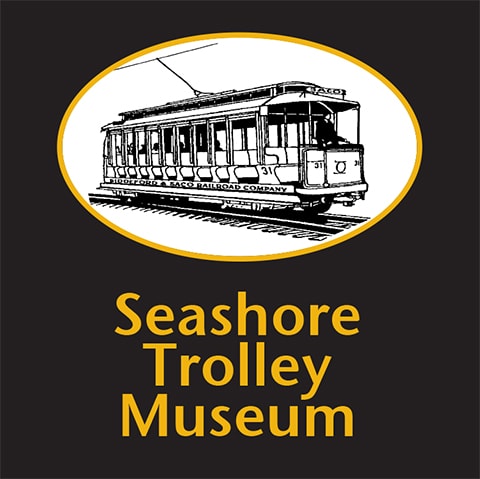 Educator Resources – For use in classroom
Educator Resources – For use in classroom
Educators will find these resources useful in preparing for and following up on a field trip with their students.
History in Motion: Public Transportation Connecting Maine Communities
Exhibit at Seashore Trolley Museum
Curriculum** Three lesson plans integrating U.S. History and Science with Language Arts. Designed to help students grades 3 – 7 discover history and science through their exploration of public transportation systems in the past, present, and future, with a focus upon Maine.
**Targets 2007 Maine Learning Results Performance Indicators and the award-winning pedagogical standards set by the National Center for Technological Literacy based at the Boston Museum of Science.
Unit Outline
- Lesson 1: Trolleys, Textile Mills, and Tourists: How Maine’s Electric Railways were an Economic Engine
- Lesson 2: A Seat for Everyone: Public Transportation Weaving the Fabric of Society
- Lesson 3: Birth of the Bus: Science, Invention and You
Public transportation has been a vital part of the social structure of the United States for most of our nation’s history
Transportation strategies and technologies overcome geographic obstacles and enable communities and cultural groups to connect with one another, enabling economic growth and sometimes cultural conflict
Industrialization, in general, and the invention of electric railways, buses, and automobiles, in particular, changed the diversity of Maine and the social mobility of its population
Natural resources, such as rivers, coal, and timber, were used to power trolleys and factories with steam power and electricity.
Lesson Plans and Bridging Documents
CHILDREN’S BOOKS Recommended
Grandfather’s Trolley Bruce MacMillan (Candlewick, 1995)
Takes readers back to the trolley car days of the early 1900s as a little girl hops aboard a trolley car motored by her grandfather. Using hand-tinted photographs that picture a time long ago, Bruce McMillan captures the tender rapport that exists between grandchildren and their grandparents, leaving readers with a portrait that will keep alive the memory of a cherished grandfather.
Beneath The Streets of Boston: Building America’s First Subway Joe McKendry (David R. Godine, 2005) Suitable for age 8 up.
An exploration of a century-old world when Boston designed and created the country’s first subway. In stunning artwork and through a fascinating (and historically accurate) narrative of Beantown’s first “Big Dig” you will enter the subterranean realm of workers who dug miles of tunnels by hand.
Claudette Colvin: Twice Towards Justice Phillip Hoose (Farrar, Straus and Giroux, 2009). Grades 7-12
Based on extensive interviews with Claudette Colvin and many others, Phillip Hoose presents the first in-depth account of an important yet largely unknown civil rights figure, skillfully weaving her dramatic story into the fabric of the historic Montgomery bus boycott and court case that would change the course of American history.
The Railroad: Inventions that Shaped the World John R. Matthews (Scholastic, 2005)
The Automobile: Inventions that Shaped the World Robyn Conley (Scholastic, 2005)
A Picture Book of Rosa Parks David A. Adler (Scholastic, 1995)
Rosa Nikki Giovanni (Henry Holt and Co., 2007). Grades 3-5
Gives context to Rosa Parks’ role in the Montgomery Bus Boycott. Children will learn of Parks’ family life. They also will experience the day Parks refused to give up her seat and see how the black community responded and rallied. By mentioning Emmett Till and others, Giovanni contextualizes Parks’ place in the Civil Rights Movement.
The Bus Ride That Changed History: The Story of Rosa Parks Pamela Duncan Edwards (Houghton Mifflin Co., 2005). Grades 2-4
Tells the story of the Montgomery Bus Boycott. The book includes the boycott story along with a parallel story, below it, of children discussing its impact. These children ask and respond in much the same way your students might respond.
The Subway Mouse Barbara Reid (Scholastic, 2005). Grades K-2

 Educator Resources – For use in classroom
Educator Resources – For use in classroom